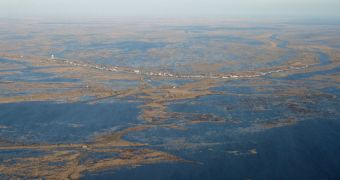According to the results of a new analysis, it would appear that the tectonic plate supporting the Mississippi Delta is sinking into our planet's mantle at a much slower rate than originally calculated.
Geoscientists say that the rate of subsidence for this section of Earth's crust has been significantly overestimated. Details of their study appear in the April 2 issue of the journal Earth and Planetary Science Letters.
The investigation itself was conducted on a number of regions on the coastlines of Louisiana, and consisted of creating and comparing highly-detailed reconstructions of past and current sea levels.
The study was led by scientists at the Tulane University, with funding provided by the US National Science Foundation (NSF) Directorates for Geosciences (DGS) and for Social, Behavioral & Economic Sciences (DSBES).
It revealed that the difference between the values hinted at in these reconstructions was smaller than previous researches had shown. “The findings demonstrate the value of research on different facets of Earth system dynamics over long time periods,” expert Thomas Baerwald says.
He holds an appointment as a geography and spatial sciences program director at the NSF. “The results provide valuable new insights about the factors that affect shorelines and other locations in the Gulf Coast area now and into the future,” Baerwald goes on to say.
According to Tulane University researcher Torbjörn Törnqvist, some of the areas in the Delta, including the one underneath New Orleans, sank less than 1 inch per century faster than other regions, such as those in the southwestern parts of the state.
Previously, it was believed that the more unstable regions were sinking at a minimum rate of 30 inch per century, maybe even more, primarily due to the continuous deposition of sediment within the Delta.
But the research also placed the prospect of global sea level rise into perspective. The data the team obtained are, in a word, sobering.
“These subsidence rates are small compared to the rate of present-day sea-level rise from the Florida panhandle to east Texas,” Törnqvist explains.
“The rate of sea-level rise in the 20th century in this region has been five times higher compared to the pre-industrial millennium as a result of human-induced climate change,” he goes on to say.
“Looking forward 100 years, our main concern is the continued acceleration of sea-level rise due to global warming, which may amount to as much as three to five feet,” the investigator concludes.

 14 DAY TRIAL //
14 DAY TRIAL //